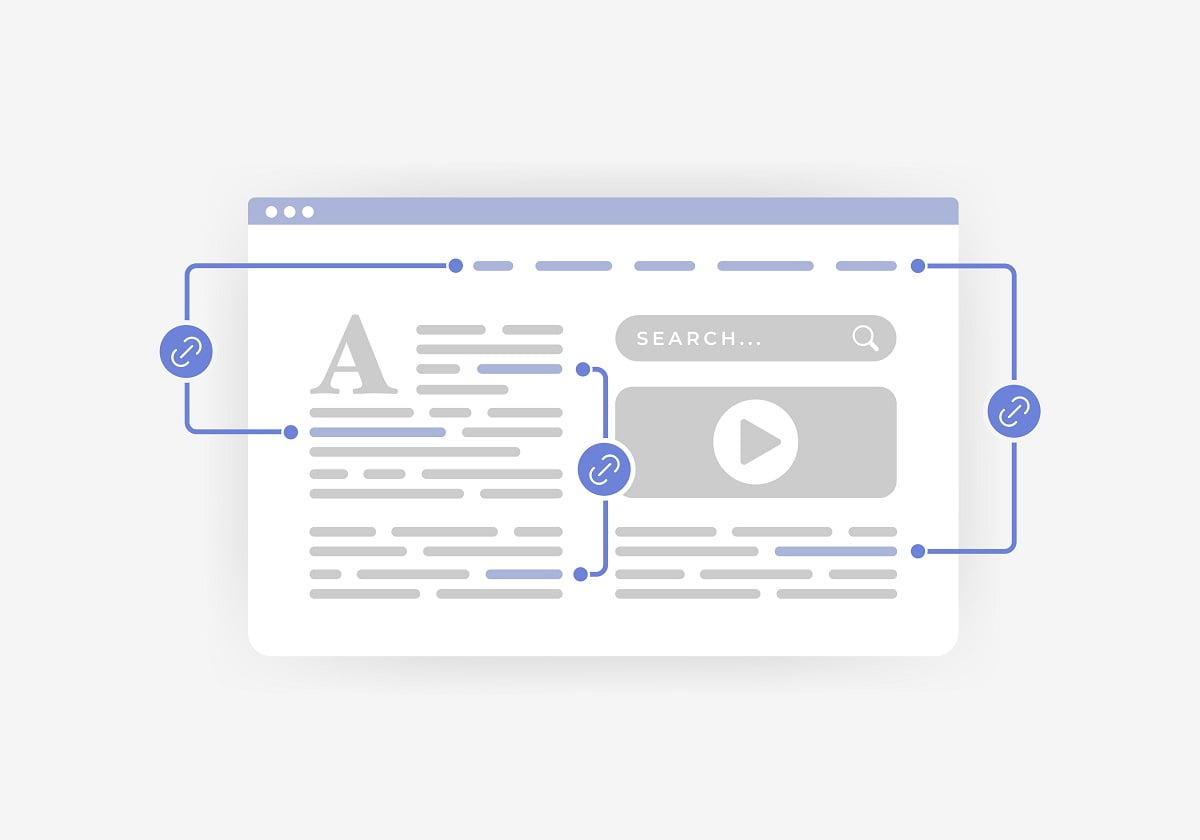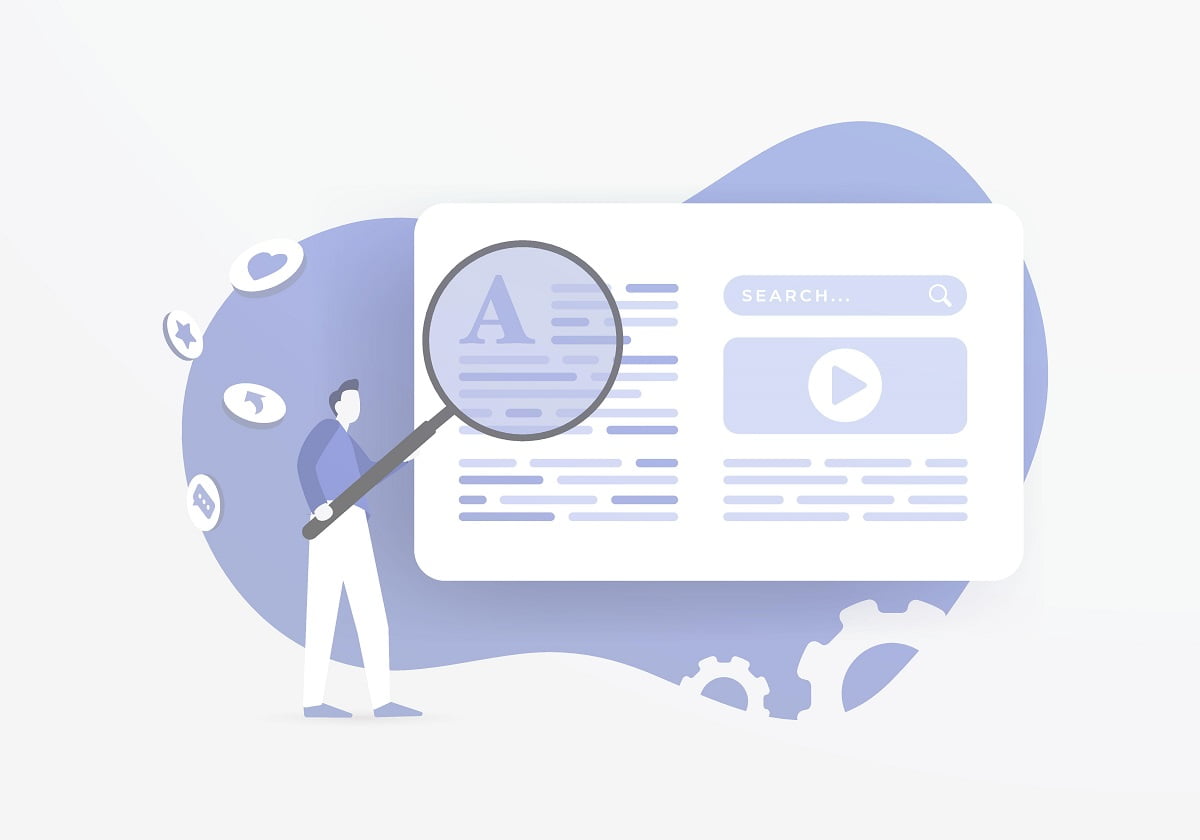Mastering the Craft: Efficiently Planning Evergreen Content

Creating quality content that withstands the test of time can be a challenge for any content marketer. However, by strategically planning evergreen content, you can ensure a long-term content strategy that engages your audience and boosts your website’s SEO. In this section, we will delve into the importance of evergreen content planning, and our expert tips for a successful long-term content strategy.
Key Takeaways
- Planning evergreen content is essential for creating a sustainable long-term content strategy.
- By creating timeless content, you can engage your audience for an extended period.
- Keyword research is crucial in optimizing evergreen content for long-term visibility.
- Choosing evergreen topics that remain relevant over time is critical to a successful content strategy.
- Incorporating evergreen content into your SEO strategy can increase visibility and engagement.
Understanding Evergreen Content
If you’re looking to create timeless content that remains relevant to your audience over time, you need to understand the concept of evergreen content. This type of content is not time-bound and focuses on topics that are always relevant to your target audience.
By creating evergreen content, you’re investing in a sustainable content creation strategy that will keep your website fresh and engaging for years to come. Let’s explore some tips for creating evergreen content that stands the test of time.
Creating Timeless Content
When creating evergreen content, it’s essential to focus on topics and themes that are not subject to seasonal or trend-based fluctuations. For example, a blog post on “10 tips for improving productivity” is evergreen content, while a post on “The best summer vacation spots of 2021” is not.
By focusing on creating timeless content, your website will become a valuable resource that your audience can rely on for years to come. This, in turn, will lead to increased traffic, engagement and conversions.
Sustainable Content Creation
Investing in evergreen content is a wise move for your long-term content strategy. Unlike other types of content, evergreen content doesn’t require frequent updates and can continue to generate traffic and leads long after it’s published.
By creating evergreen content, you’re building a sustainable content creation strategy that will save you time and resources in the long run. Rather than constantly churning out new content, you can focus on refining and updating your existing evergreen content to keep it fresh and relevant.
Overall, understanding and investing in evergreen content is essential for any business looking to build a sustainable content marketing strategy. By creating timeless content that remains relevant and engaging to your audience, you can boost your website’s SEO, drive long-term success, and establish yourself as a thought leader in your industry.
Conducting Keyword Research
Optimizing evergreen content requires strategic keyword research. By selecting the right keywords, you can ensure that your content remains visible and relevant to your audience over time. Here are some tips for conducting effective keyword research for long-lasting content planning:
Start with Seed Keywords
Begin your keyword research with seed keywords related to your evergreen topic. These are broad keywords that describe the overall subject of your content. Use tools such as Google Keyword Planner or Ahrefs Keyword Explorer to generate a list of related keywords based on your seed keywords.
Analyze Keyword Metrics
When selecting keywords, pay attention to their search volume, competition, and relevance. Aim for keywords with high search volume, low competition, and high relevance to your evergreen topic. This will help you rank higher in search engine results and attract more traffic to your content.
| Keyword Metric | Importance |
|---|---|
| Search Volume | High |
| Competition | Low |
| Relevance | High |
Consider Long-Tail Keywords
Long-tail keywords are longer, more specific phrases that describe your evergreen topic in detail. They may have lower search volume than broad keywords, but they are also less competitive, making it easier to rank for them. Use long-tail keywords to target specific niches within your audience and attract more qualified traffic to your content.
Optimize Keywords in Content
Once you have selected your keywords, optimize them in your evergreen content. Include them in your headlines, subheadings, meta tags, and throughout your content. But be careful not to overuse them; you don’t want your content to appear spammy or unnatural.
By conducting thorough keyword research and optimizing your evergreen content accordingly, you can future-proof your content strategy and ensure long-lasting success.
Defining Evergreen Topics
When it comes to evergreen content marketing, choosing the right topic is critical. Your content should be able to stand the test of time, continuously engaging your audience and driving traffic to your website. Here are some tips on how to define evergreen topics for your content:
Identify Universal Problems and Needs
Universal problems and needs are topics that are relevant to people regardless of their location, age, or social status. These topics are timeless and can generate traffic for years to come. Examples of universal topics include parenting, personal finance, and health and wellness.
Focus on Educational Content
Content that educates your audience on a particular topic is an excellent way to create evergreen content. Educational content provides value to your readers, making them more likely to engage with your brand over time. Examples of educational evergreen topics include how-to guides, tutorials, and informative articles.
Choose Topics with Longevity
When choosing evergreen topics, it’s essential to pick subjects that are unlikely to become outdated quickly. For instance, writing about a trending topic may drive traffic to your site initially, but it may not remain relevant for long. Instead, focus on writing about topics that will stay relevant over time, such as industry insights, historical events, and classic literature.
Create Content with a Future-Proof Approach
Creating evergreen content doesn’t stop at choosing the right topic. You must also ensure that the content is crafted with a future-proof approach. This means avoiding trendy language, pop culture references, or time-sensitive statistics that may become irrelevant over time. Instead, use evergreen language, statistics, and references that will remain relevant no matter when your audience reads the content.
By choosing the right topics and crafting timeless content, you can build a sustainable evergreen content marketing strategy that drives long-term success.
Crafting Timeless Content Formats
When creating evergreen content, it’s essential to consider the format you will use to present information. Some content formats are more effective than others when it comes to longevity. Here are some evergreen content planning tips to help you craft timeless content formats that keep your audience engaged over time.
Keep it Simple
One of the most critical elements of creating timeless content is keeping it simple. Avoid using terminology or jargon that will become outdated or difficult for your audience to understand. Instead, use straightforward language and focus on providing actionable insights that will be valuable to your audience.
Use Visuals
Visuals are an excellent way to break up text and make your content more engaging. Consider using infographics, images, and videos to convey your message visually. Visual content is often more shareable and can attract a wider audience to your website.
| Visuals | Advantages |
|---|---|
| Infographics | Provides a visual representation of complex information, easier to understand and share on social media |
| Images | Breaks up text, visually compelling, and provides context for your content |
| Videos | Engages visitors, helps to tell stories, and offers a more comprehensive explanation of complex topics |
Provide Value
Content that provides valuable insights and actionable advice is more likely to stand the test of time. Always focus on providing value to your audience, rather than just promoting your products or services. The more valuable your content, the more likely it is to be shared and engaged with over time.
Simplify Complex Ideas
Evergreen content should be accessible to everyone, regardless of their level of expertise. Avoid using complex language or ideas that are difficult to understand. Instead, use simple language and break down complex ideas into easily digestible pieces of information.
- Break down complex ideas into smaller, more digestible pieces of information
- Use simple language and avoid jargon
- Provide clear examples to illustrate your points
By following these evergreen content planning tips, you can create timeless content formats that keep your audience coming back for more. Remember to keep it simple, use visuals, provide value, and simplify complex ideas to ensure your content is accessible and engaging over time.

Developing a Content Calendar
Creating a content calendar is an essential step in planning your evergreen content. A well-structured calendar helps you to ensure consistency and avoid producing content that may confuse or bore your audience. It also helps you to organize your publishing schedule and ensure that your content is optimized for SEO.
Choosing the Right Content Management System
Before developing your calendar, it’s important to choose the right content management system (CMS) for your needs. There are many CMS options available, from WordPress to Drupal. Consider the level of customization, ease of use, and ability to integrate with your team’s workflow when selecting a CMS.
Determining Your Goals and Themes
When developing your content calendar, it’s important to determine your goals and themes. Are you looking to increase your website traffic, generate leads, or boost sales? What topics do you want to cover? By answering these questions, you can develop a content calendar that aligns with your goals and themes.
| Content Calendar Template | Description |
|---|---|
| Month/Week | Indicate the month or week that the content will be published. |
| Thematic Focus | Specify the main theme or focus of the content piece. |
| Target Audience | Identify the target audience or buyer persona that the content will appeal to. |
| Content Type | List the type of content, such as blog post, video, infographic, or white paper. |
| Keywords | Include the target keywords for each content piece, ensuring it aligns with your SEO strategy. |
| Call to Action (CTA) | Specify the desired CTA, such as “download our free e-book” or “contact us for a consultation. |
Assigning Responsibility and Setting Deadlines
Assigning responsibility and setting deadlines for each piece of content is crucial for creating a content calendar that maximizes productivity and ensures consistency. Make sure to clearly define each team member’s role and set deadlines that provide ample time for research, writing, and editing.
Updating Your Content Calendar
Make sure to review and update your content calendar regularly to ensure that it aligns with your long-term content strategy. Consider changes in your audience’s interests or preferences, industry trends, and other factors that may impact your content. By staying agile and flexible, you can create a content calendar that adapts to your audience’s changing needs and preferences.
Developing a content calendar is essential to creating a long-term content strategy that maximizes the value of your evergreen content. By following these tips, you can develop a structured and organized approach to content creation that sets your website up for long-term success.
Incorporating Evergreen Content in SEO Strategy
Optimizing your evergreen content for search engines is crucial for its success in the long term. By incorporating key SEO strategies, you can ensure that your evergreen content continues to attract traffic and engage your audience.
Choose the Right Keywords
When optimizing evergreen content for SEO, the first step is to conduct keyword research. Use tools like Google Keyword Planner to identify keywords and phrases that are relevant to your content and have high search volume.
When choosing keywords, aim for long-tail phrases with low competition. These may not have the highest search volume, but they are easier to rank for and often attract more qualified traffic.
Use On-Page SEO Techniques
There are several on-page SEO techniques you can use to optimize your evergreen content. Make sure to include your target keywords in the title, meta description, and throughout the content itself.
Use header tags (H1, H2, H3) to structure your content and make it easier for search engines to understand. Incorporate internal links to other relevant content on your website, which can help establish your site’s authority and improve user experience.
Monitor Performance and Make Updates
Regularly monitoring the performance of your evergreen content is essential to ensure it continues to attract traffic and engage your audience. Use tools like Google Analytics to track metrics like page views, bounce rate, and time on page.
If you notice that your evergreen content is not performing as well as it should be, consider making updates to improve its relevance and value. This could include updating outdated information, adding new sections or examples, or improving the overall structure and readability of the content.
By incorporating these SEO strategies into your evergreen content planning, you can ensure that your content remains visible and valuable to your audience for years to come.
Promoting and Repurposing Evergreen Content
Creating evergreen content is just the first step in building a sustainable content strategy that keeps your audience engaged and your website’s SEO ranking high. Promoting and repurposing your evergreen content is equally important for maximizing its impact and reaching new audiences.
Promoting Evergreen Content
There are various ways to promote evergreen content, such as sharing it on social media, including it in email newsletters, and featuring it on your website’s homepage or sidebar. You can also consider collaborating with other websites or influencers to promote your content to their audiences.
| Promotion Method | Advantages | Disadvantages |
|---|---|---|
| Social Media | Wide reach, easy to share | May get lost amidst other content |
| Email Newsletters | Directly targets subscribers, higher chance of engagement | May not reach non-subscribers |
| Collaboration | Reaches new audiences, builds partnerships | May be time-consuming to coordinate |
When promoting your evergreen content, it’s important to use eye-catching visuals and compelling headlines to grab your audience’s attention. You can also experiment with different formats, such as video or infographics, to make your content more shareable and engaging.
Repurposing Evergreen Content
Repurposing evergreen content involves taking your existing content and presenting it in a new format or for a different audience. This allows you to reach new audiences while also maximizing the value of your existing content.
For example, you can turn a blog post into a video or podcast episode, or create an eBook or whitepaper based on several related blog posts. You can also consider translating your content into different languages or adapting it for different platforms, such as social media or LinkedIn.
When repurposing your evergreen content, it’s important to tailor your content to the specific format and audience. For example, a video may require a more visual approach, while an eBook may require a more in-depth analysis of the topic.
Analyzing and Updating Evergreen Content
Understanding how your evergreen content is performing is just as important as creating it. By analyzing the performance of your content, you can identify what works and what needs improvement, ensuring its continued success.
When analyzing your evergreen content, consider the following:
- Pageviews: Track the number of pageviews your evergreen content receives over time to gauge its popularity and identify any changes in traffic patterns.
- Bounce Rate: Keep an eye on your evergreen content’s bounce rate as it may indicate that the content needs improvement or isn’t resonating with your audience as much as it could.
- Engagement: Look at how users are engaging with your content. Analyze the time spent on page, social shares, and comments. Engagement is an indicator of how valuable users find your content.
Updating evergreen content is also crucial to keep it relevant and engaging. Here are a few tips:
- Update outdated statistics and information to ensure accuracy.
- Add new sections or insights to keep the content fresh.
- Include links to related content or resources to boost engagement and provide value to your audience.
By analyzing and updating your evergreen content regularly, you can maintain its relevance and ensure its long-term success in your future-proof content strategy.
Conclusion
Congratulations on reaching the end of this informative article on planning evergreen content! By now, you have gained valuable insights into the planning process, from understanding what evergreen content is to creating a content calendar and promoting and repurposing your content effectively.
Remember, the key to creating content that withstands the test of time is to focus on topics that are relevant to your audience and can remain informative and valuable for an extended period. Conducting thorough keyword research and choosing the right content format can help ensure that your content remains timeless.
By incorporating evergreen content into your SEO strategy and analyzing and updating your content consistently, you can ensure its continued success and drive long-term traffic to your website.
With the tips and strategies outlined in this article, you are well on your way to developing a sustainable content strategy that keeps your audience engaged and boosts your website’s SEO. So what are you waiting for?
Start Planning Your Evergreen Content Today!
FAQ
What is evergreen content?
Evergreen content refers to content that remains relevant and valuable to your audience over an extended period. It is not time-sensitive and can continue to attract and engage readers long after it is published.
Why is planning evergreen content important?
Planning evergreen content is important because it helps you create a long-term content strategy that stands the test of time. By focusing on topics and formats that have lasting appeal, you can consistently drive traffic and provide value to your audience.
How do I conduct keyword research for evergreen content?
Conducting keyword research for evergreen content involves identifying and selecting keywords that have long-lasting relevance and search volume. You can use various keyword research tools and techniques to find keywords that align with your content goals and target audience.
How do I define evergreen topics for my content?
Defining evergreen topics involves choosing subjects that will remain relevant to your audience over time. This can include topics that address common problems, provide educational information, or offer timeless advice. Consider the interests and needs of your target audience when selecting evergreen topics.
What are the best content formats for evergreen content?
The best content formats for evergreen content are those that have enduring appeal and can be easily updated if necessary. This can include articles, guides, tutorials, infographics, and videos. Choose a format that suits your content goals and resonates with your audience.
How do I develop a content calendar for evergreen content?
Developing a content calendar for evergreen content involves planning and organizing your content production and distribution efforts. Consider the frequency of your content updates, the topics you want to cover, and the best times to publish for maximum impact. A content calendar will help you stay organized and ensure consistent production of evergreen content.
How can I incorporate evergreen content into my SEO strategy?
Incorporating evergreen content into your SEO strategy involves optimizing your content for relevant keywords, using descriptive metadata, and ensuring your content is easily discoverable by search engines. By focusing on evergreen topics and providing valuable information, your content can attract organic traffic and improve your website’s SEO performance.
What are some strategies for promoting and repurposing evergreen content?
To promote and repurpose evergreen content, you can share it on social media, include it in newsletters, or collaborate with influencers or other websites to increase its visibility. Additionally, repurposing evergreen content into different formats, such as creating a podcast from a blog post, can help reach new audiences and extend its lifespan.
How do I analyze and update evergreen content?
Analyzing and updating evergreen content involves monitoring its performance, reviewing user feedback, and making necessary updates to keep it relevant. Analyze metrics such as page views, engagement, and conversions to identify areas for improvement. Regularly update your evergreen content with fresh information or new examples to maintain its value to readers.





